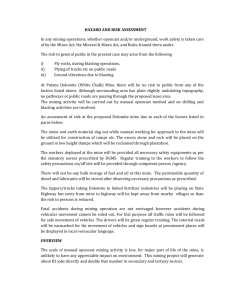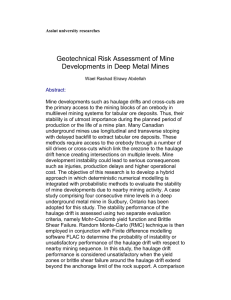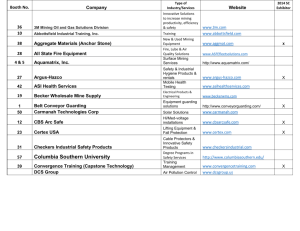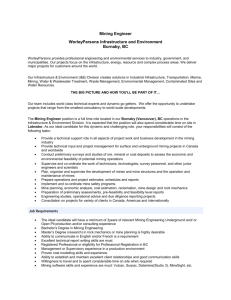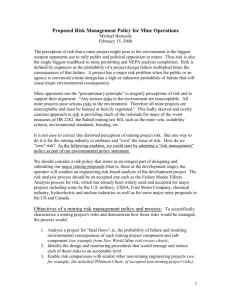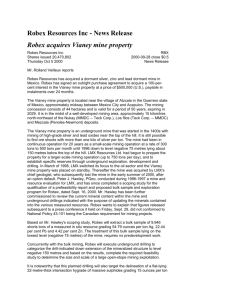Assiut university researches Stochastic Stability Analysis of Mine
advertisement
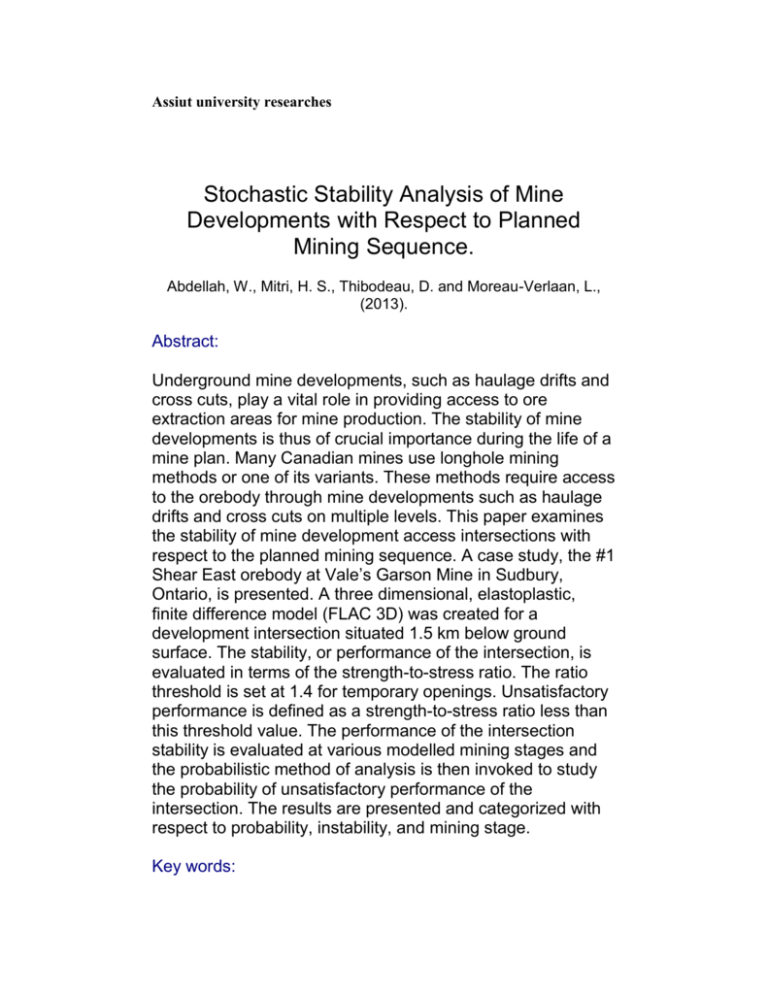
Assiut university researches Stochastic Stability Analysis of Mine Developments with Respect to Planned Mining Sequence. Abdellah, W., Mitri, H. S., Thibodeau, D. and Moreau-Verlaan, L., (2013). Abstract: Underground mine developments, such as haulage drifts and cross cuts, play a vital role in providing access to ore extraction areas for mine production. The stability of mine developments is thus of crucial importance during the life of a mine plan. Many Canadian mines use longhole mining methods or one of its variants. These methods require access to the orebody through mine developments such as haulage drifts and cross cuts on multiple levels. This paper examines the stability of mine development access intersections with respect to the planned mining sequence. A case study, the #1 Shear East orebody at Vale’s Garson Mine in Sudbury, Ontario, is presented. A three dimensional, elastoplastic, finite difference model (FLAC 3D) was created for a development intersection situated 1.5 km below ground surface. The stability, or performance of the intersection, is evaluated in terms of the strength-to-stress ratio. The ratio threshold is set at 1.4 for temporary openings. Unsatisfactory performance is defined as a strength-to-stress ratio less than this threshold value. The performance of the intersection stability is evaluated at various modelled mining stages and the probabilistic method of analysis is then invoked to study the probability of unsatisfactory performance of the intersection. The results are presented and categorized with respect to probability, instability, and mining stage. Key words: Mine developments, underground mining, numerical modelling, Probabilistic method of analysis (PEM) Published in: 23rd world mining congress (WMC), Montreal, Quebec, Canada, August 11-15, 2013 (Accepted). Paper No. 170.,,


